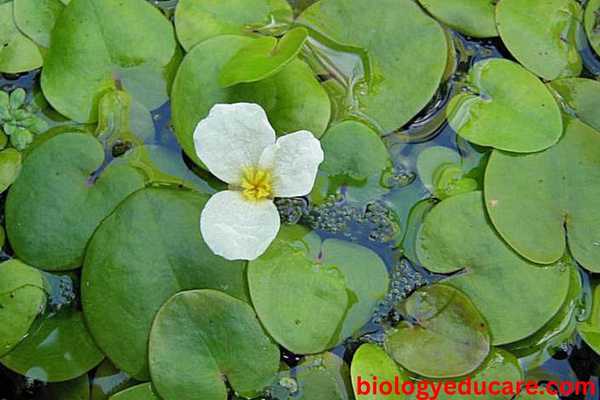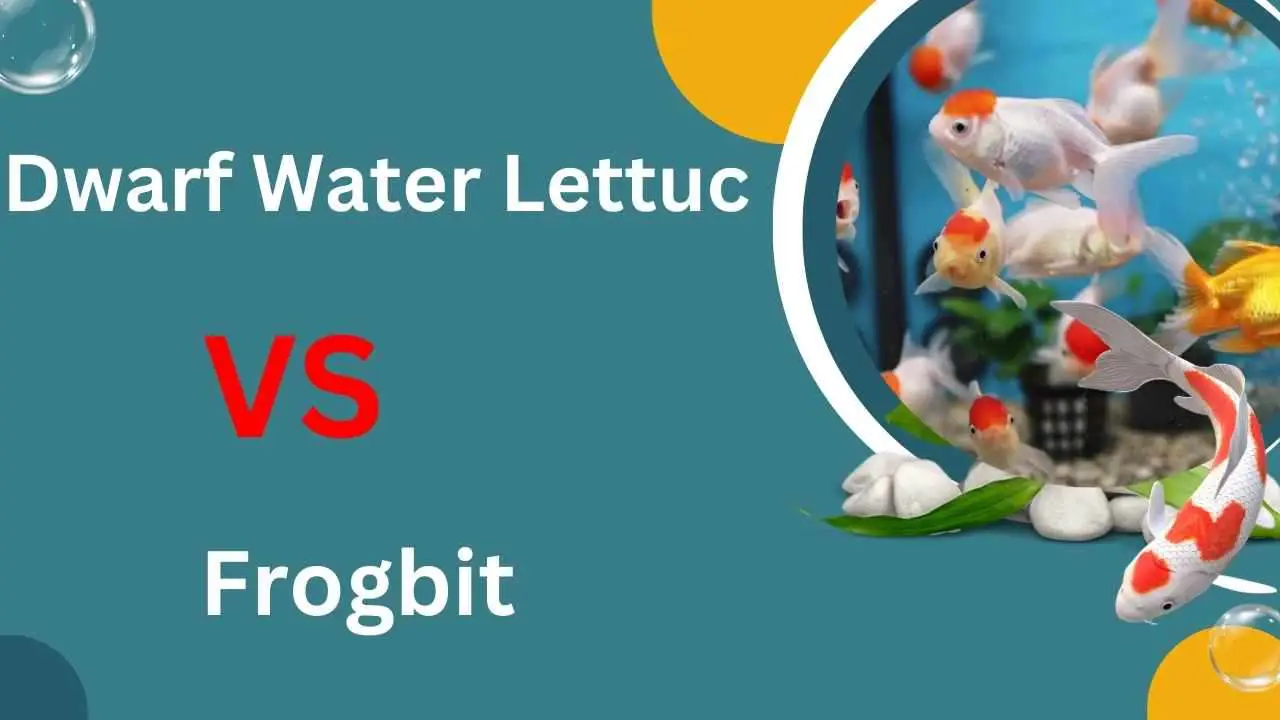Dwarf water lettuce (Pistia stratiotes) and frogbit (Hydrocharis morsus-ranae) are both aquatic plants that can be used to add beauty to your aquariums and ponds. They are both popular choices among aquarists and pond enthusiasts due to their low maintenance and easy cultivation. In this article, we will explore the difference between dwarf water lettuce and frogbit for aquariums and ponds.
Habitat and Distribution
Dwarf Water Lettuce
Dwarf water lettuce, also known as, water cabbage, water lettuce, Nile cabbage, or shellflower. It is a floating aquatic plant that is native to tropical and subtropical regions of South America, Africa, and Asia. It is considered an invasive species in many areas and can be found in freshwater ponds, lakes, and canals. It is more adaptable to a warmer climate which can be grown in a wide range of water temperatures, from tropical to subtropical.
Systematic Position
Kingdom: Plantae
Clade: Angiosperms
Clade: Monocots
Order: Alismatales
Family: Araceae
Genus: Pistia
Species: Pistia stratiotes

Frogbit
Frogbit is also known as the common frogbit or European frog’s-bit. It is native to Europe and Asia and is found in freshwater ponds, lakes, ditches, and slow-moving streams. It is also considered non-invasive and can be found in the wild in many regions of the world. It prefers cooler water temperatures and may not survive in water that is too warm.
Systematic Position
Kingdom: Plantae
Clade: Angiosperms
Clade: Monocots
Order: Alismatales
Family: Hydrocharitaceae
Genus: Hydrocharis
Species: Hydrocharis morsus-ranae

Physical Differences
The physical differences between dwarf water lettuce and frogbit are quite noticeable.
Dwarf Water Lettuce
Dwarf water lettuce is a floating plant that has large, delicate leaves and a rosette growth pattern. The leaves are typically green and can reach up to 4 inches in diameter. Its small white flowers are visible above the water’s surface. It reproduces by producing small plantlets on its leaves.
Frogbit
Frogbit is a rooted plant that has small, round leaves with low-growing habits. The leaves are typically green and can reach up to 1 inch in diameter. The flowers are small and white, and it reproduces by producing small plantlets on their leaves, as well as by seed.
Temperature Tolerance
Dwarf Water Lettuce
Dwarf water lettuce is a highly adaptable plant and can tolerate a wide range of water temperatures, from tropical to subtropical. It can grow in water temperatures between 60-90°F (15-32°C) and can survive in temperatures as low as 50°F (10°C) and as high as 95°F (35°C) for short periods. This makes it a suitable plant for a wide range of aquatic environments, including tropical aquariums and warm ponds.
Frogbit
Frogbit prefers cooler water temperatures and may not survive in water that is too warm. It can grow in water temperatures between 60-75°F (15-24°C) and can survive in temperatures as low as 50°F (10°C) and as high as 80°F (27°C) for short periods. This makes it a suitable plant for cooler aquariums and ponds, and it is often used in temperate and subtropical climates.
Housing and Care
Dwarf water lettuce
Dwarf water lettuce is a floating plant, so it requires minimal maintenance and can be grown in a variety of aquatic environments, including aquariums, ponds, and even outdoor water features. It prefers bright, indirect sunlight, and should be kept in water that is free of pollutants and has a pH range of 6.0-8.0. It can survive in a wide range of water temperatures and does not require a specific water flow rate. It reproduces rapidly, so it should be monitored and thinned out as necessary to prevent overgrowth.
Frogbit
Frogbit is a rooted plant that requires a substrate or a soil bed to grow in. It prefers bright, indirect sunlight and should be kept in water that is free of pollutants and has a pH range of 6.0-8.0. It can survive in a wide range of water temperatures and does not require a specific water flow rate. It reproduces slowly but should be monitored and thinned out as necessary to prevent overgrowth.
Propagation
Dwarf Water Lettuce
Dwarf water lettuce reproduces rapidly by producing small plantlets on its leaves, which can easily detach and float away to establish new colonies. The plantlets can be harvested and planted in a new location or left to grow in the original location.
Frogbit
Frogbit reproduces at a slower rate than Dwarf water lettuce, through small plantlets on its leaves and by seed. The plantlets can be harvested and planted in a new location or left to grow in the original location. Frogbit can also be propagated by dividing the roots of the plant. When dividing the roots make sure to separate the plantlets that have formed and plant them in a new location.
Suitability for Aquariums and Ponds
Dwarf Water Lettuce
It is a floating plant that is highly adaptable and can be grown in a wide range of aquatic environments. It can be used in both tropical and subtropical aquariums and ponds and is a good choice for covering the surface of the water to provide shade and oxygenation. It can also be used as a spawning medium for some species of fish.
Frogbit
Frogbit is a rooted plant that prefers cooler water temperatures and is best suited for temperate and subtropical aquariums and ponds. It can be used as a floating plant or planted in a substrate or soil bed. It can also be used to provide shade and oxygenation, as well as a spawning medium for some species of fish.
Invasiveness
Dwarf Water Lettuce
Dwarf water lettuce is considered to be an invasive species in many areas, and can quickly take over a pond or aquarium if not controlled. It reproduces rapidly by producing small plantlets on its leaves, which can easily detach and float away to establish new colonies. This can lead to clogged waterways, reduced sunlight penetration, and reduced oxygen levels in the water, which can harm other aquatic life.
Frogbit
Frogbit is considered to be non-invasive and will not take over a pond or aquarium if it is kept in check. It reproduces at a slower rate than Dwarf water lettuce, through small plantlets on its leaves and by seed. It is also a smaller plant and does not tend to shade out other aquatic plants as readily as Dwarf water lettuce.
Disease and Treatment
Both Dwarf water lettuce and frogbit are relatively hardy plants, but they can be susceptible to certain diseases and pests if grown in poor water conditions.
Dwarf Water Lettuce
It can be susceptible to fungal infections, such as powdery mildew if the water is too stagnant or contains high levels of pollutants. This can cause the leaves to turn yellow and become covered in white, powdery spots. To prevent fungal infections, it is important to provide good water flow and keep the water clean and well-oxygenated. If an infection occurs, it can be treated with a fungicide.
Frogbit
It can be susceptible to pests such as snails and slugs, which can damage the leaves. To prevent pest infestations, it is important to keep the water clean and well-oxygenated. If pests are present, they can be removed manually or treated with a pesticide.
Some Key Differences Between Dwarf Water Lettuce and Frogbit
There are some following key differences between Dwarf water lettuce (Pistia stratiotes) and frogbit (Hydrocharis morsus-ranae):
Dwarf water lettuce is a floating plant, whereas frogbit has roots that anchor it to the bottom of the tank or pond.
Dwarf water lettuce has larger, more delicate leaves than frogbit, which has small, round leaves.
Dwarf water lettuce is considered an invasive species in many areas, and can quickly take over a pond or aquarium if not controlled. Frogbit, on the other hand, is generally considered to be non-invasive.
Dwarf water lettuce prefers warmer water temperatures than frogbit, and will not survive in water that is too cold.
Dwarf water lettuce is considered a more delicate plant than frogbit and may not survive in tanks with large fish or with high levels of nitrates.
Which Is the Better Choice for an Aquarium?
Dwarf water lettuce is a highly adaptable and rapidly reproducing plant that can be used in a wide range of aquatic environments. It is a good choice for covering the surface of the water to provide shade and oxygenation. While Frogbit is a rooted plant that prefers cooler water temperatures and is best suited for temperate and subtropical aquariums. Ultimately, the best choice for your aquarium depends on the specific conditions and needs of the aquarium and the fish it houses.
Frequently Asked Questions
Question-1: Can Dwarf Water Lettuce and Frogbit Be Grown Together in the Same Aquarium?
Answer: Yes, Dwarf water lettuce and frogbit can be grown together in the same aquarium as long as the water conditions are appropriate for both plants. However, it is important to note that Dwarf water lettuce reproduces rapidly and may need to be thinned out regularly to prevent overgrowth, while frogbit reproduces slowly.
Question-2: Can Dwarf Water Lettuce and Frogbit Be Plant in a Substrate or Soil Bed?
Answer: Frogbit can be planted in a substrate or soil bed, but Dwarf water lettuce is a floating plant and cannot be planted in a substrate or soil bed. Dwarf water lettuce should be floated on the surface of the water.
Question-3: What Water Conditions Do Dwarf Water Lettuce and Frogbit Prefer?
Answer: Dwarf water lettuce is highly adaptable and can be grown in a wide range of aquatic environments. It prefers water temperatures between 60-85°F (15-29°C) and pH levels between 6-7.5. Frogbit prefers cooler water temperatures between 60-75°F (15-24°C) and pH levels between 6-7.5.
Question-4: Can Dwarf Water Lettuce and Frogbit Be used as a Food Source for Fish?
Answer: Dwarf water lettuce and frogbit can be used as food sources for some species of fish, especially herbivorous fish. However, it is important to note that these plants should not be the sole food source for fish and should be supplemented with other types of food.
Question-5: Can Dwarf Water Lettuce and Frogbit Help to Reduce Algae Growth in an Aquarium?
Answer: Dwarf water lettuce and frogbit can help to reduce algae growth in an aquarium by providing shade and oxygenation, which can inhibit the growth of certain types of algae. They can also be used as a food source for some species of fish that eat algae.
Concluding Remarks
In conclusion, Dwarf water lettuce and frogbit can be used in aquariums and ponds to provide shade, oxygenation, and a spawning medium for fish. By providing the appropriate care and conditions, both Dwarf water lettuce and frogbit can be a beautiful and beneficial addition to your aquarium, ponds, and aquatic garden.


